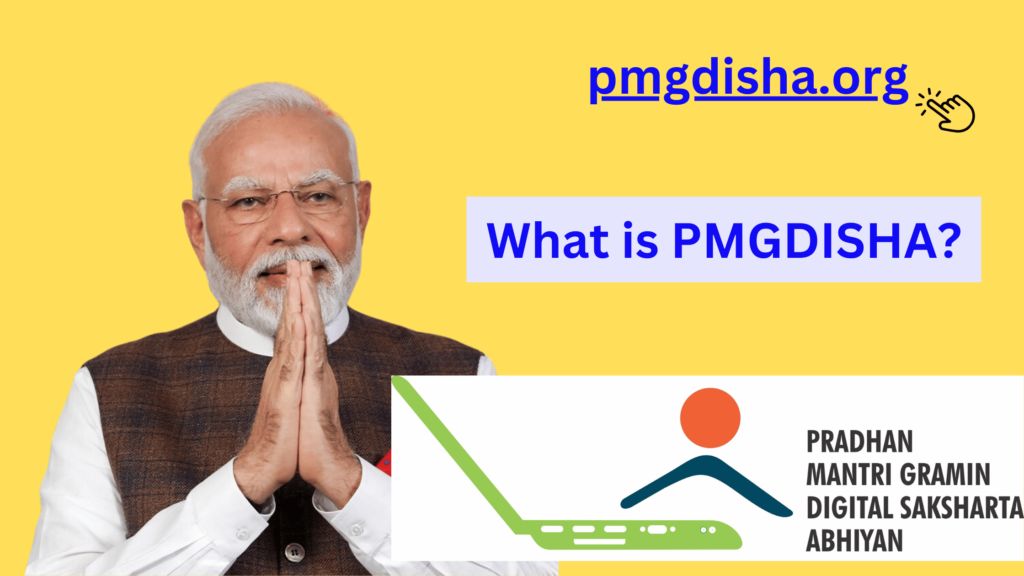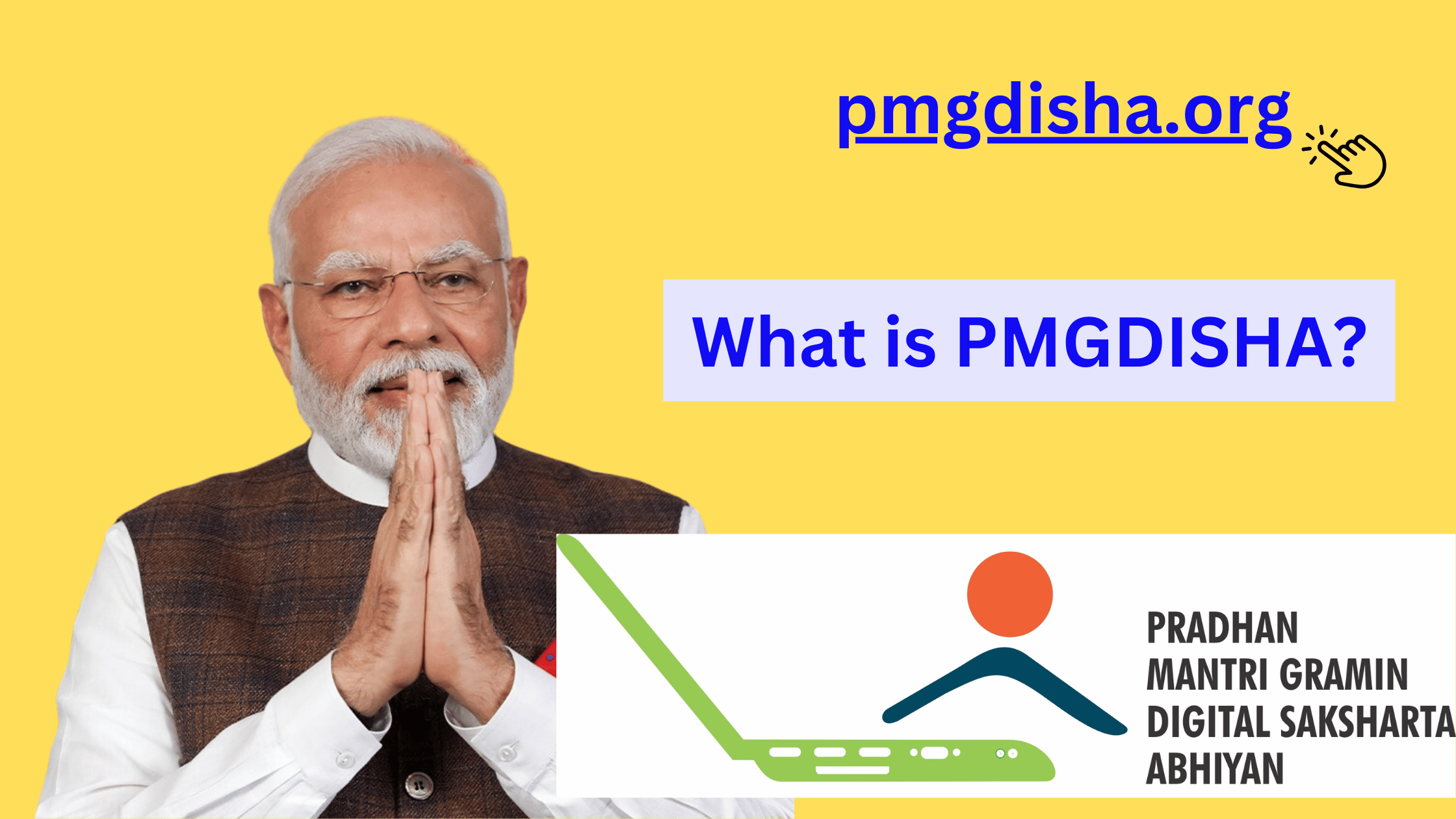So, what is PMGDISHA?
PMGDISHA (Pradhan Mantri Gramin Digital Saksharta Abhiyan) is an initiative launched by the Government of India with the aim to enhance digital literacy across rural India. The goal of this initiative is to empower rural citizens by providing them with basic digital skills that can help them access government services, educational resources, job opportunities, and much more. Launched in 2017 by the Ministry of Electronics and Information Technology (MeitY), PMGDISHA aims to bridge the digital divide between rural and urban areas by enabling rural people to operate computers, smartphones, and other digital devices efficiently.
The objective of PMGDISHA:
The primary objective of the PMGDISHA scheme is to make 6 crore rural citizens digitally literate. The government intends to equip these individuals with the ability to:
- Operate digital devices such as smartphones, tablets, and computers.
- Access the internet to explore the various government services available online.
- Understand and use digital tools to communicate, learn, and transact online.
- Leverage digital technology for educational, financial, and social purposes.

Why PMGDISHA?
India is witnessing a technological revolution with the rise of smartphones, internet penetration, and the digitalization of services. However, the rural population remains largely excluded from the benefits of these advancements due to limited digital literacy. According to reports, a significant percentage of rural Indians are unaware of how to navigate through smartphones, access the internet, or use government e-services. This digital divide has hindered the full potential of rural India in terms of growth, economic opportunities, and social development.
By addressing these gaps in digital literacy, PMGDISHA aims to:
- Empower rural citizens, particularly women and the underprivileged, by improving their access to information and opportunities.
- Enable the rural populace to become active participants in the digital economy.
- Encourage the use of government schemes and services through digital platforms.
- Enhance social inclusion by fostering a digitally empowered society.
Features of PMGDISHA Scheme:
- Target Audience: The scheme specifically targets individuals in rural areas who are aged between 14 and 60 years. The goal is to make citizens proficient in the use of basic digital tools and services, regardless of their educational background.
- Curriculum and Training: The PMGDISHA scheme offers a structured curriculum that covers basic digital literacy topics. The training typically includes:
- Using digital devices (smartphones, computers, etc.).
- Accessing and using the internet for various purposes, including government portals, online banking, and e-commerce.
- Creating and managing email accounts.
- Understanding the basics of digital security and online safety.
- Utilizing social media platforms for communication and learning.
- Learning about various government services that can be accessed online.
- Implementation: The training under PMGDISHA is conducted by registered Training Partners (TPs) that work with Common Service Centers (CSCs) in rural areas. These centers serve as local hubs where individuals can attend training sessions and receive certification after completion.
- Certification: Upon completing the training, beneficiaries are awarded a certificate, which validates their digital skills and ensures that they can utilize digital tools in their daily lives. The certification is recognized across India and can significantly enhance the individual’s employability and personal empowerment.
- Financial Inclusion: One of the key components of PMGDISHA is financial literacy. The scheme encourages beneficiaries to open bank accounts, access mobile banking services, and make digital transactions, thereby increasing financial inclusion in rural areas.
- Digital Empowerment of Women: A special focus is given to empowering women in rural India through digital literacy. The government believes that when women are digitally literate, they are better equipped to manage their households, participate in the economy, and access healthcare and educational resources.
Implementation Challenges and Solutions:
Despite the success of PMGDISHA in reaching millions of people across rural India, the scheme has faced certain challenges in its implementation:
- Lack of Infrastructure: Many rural areas still lack the necessary digital infrastructure, including stable internet connectivity and access to devices. This limits the effectiveness of the training programs.
- Solution: The government has focused on improving internet connectivity in rural areas under initiatives like BharatNet and has also worked to increase the availability of affordable smartphones and computers.
- Awareness and Motivation: In some regions, people may not be fully aware of the benefits of digital literacy, which can result in low participation.
- Solution: Awareness campaigns, community outreach programs, and collaborations with local influencers have been initiated to encourage people to enroll in the program.
- Language and Accessibility: Since India is a linguistically diverse country, language barriers may affect the delivery of training programs in certain areas.
- Solution: The training material has been designed in multiple languages to ensure that people from different regions can participate and benefit from the scheme.
Impact of PMGDISHA:
Since its inception, PMGDISHA has made significant strides in bringing digital literacy to rural India. Millions of people have benefited from the program, gaining access to opportunities that were previously unavailable to them. Here are some of the key outcomes:
- Increased Digital Literacy: As of 2024, over 6 crore rural citizens have been trained under the PMGDISHA scheme, with a large percentage of them becoming digitally literate and capable of utilizing various online services.
- Economic Opportunities: The scheme has opened up new avenues for rural citizens to earn a livelihood. Digital literacy has enabled individuals to access online jobs, e-commerce platforms, and financial services, enhancing their economic status.
- Social Inclusion: The increased access to information has allowed rural citizens to participate in social, political, and economic activities more actively. They are now able to access essential government services like subsidies, health schemes, and educational resources online.
- Empowered Women: Women, who often face greater barriers to education and economic participation, have been empowered through digital literacy, helping them to improve their social and economic standing.
Future of PMGDISHA:
As India continues its march toward a digital future, the need for digital literacy will only grow. The PMGDISHA scheme is expected to expand further, reaching more rural citizens, particularly those in remote and underserved regions. With the advent of new technologies like Artificial Intelligence, IoT, and e-governance, digital literacy will be crucial for everyone, including those in rural India.
The government’s vision for PMGDISHA includes:
- Expanding the curriculum to include advanced digital skills and certifications.
- Partnering with tech giants and educational institutions to enhance the quality and reach of training programs.
- Ensuring that all rural citizens, especially marginalized groups, are included in the digital revolution.
Conclusion:
PMGDISHA is a transformative initiative that is playing a vital role in bridging the digital divide between rural and urban India. By equipping citizens in rural areas with the essential digital skills, the government is ensuring that they can participate in the rapidly evolving digital economy. As more people become digitally literate, India moves closer to achieving its goal of a digitally empowered society. With continued focus on infrastructure, awareness, and inclusive education, PMGDISHA can help shape a brighter future for rural India.
